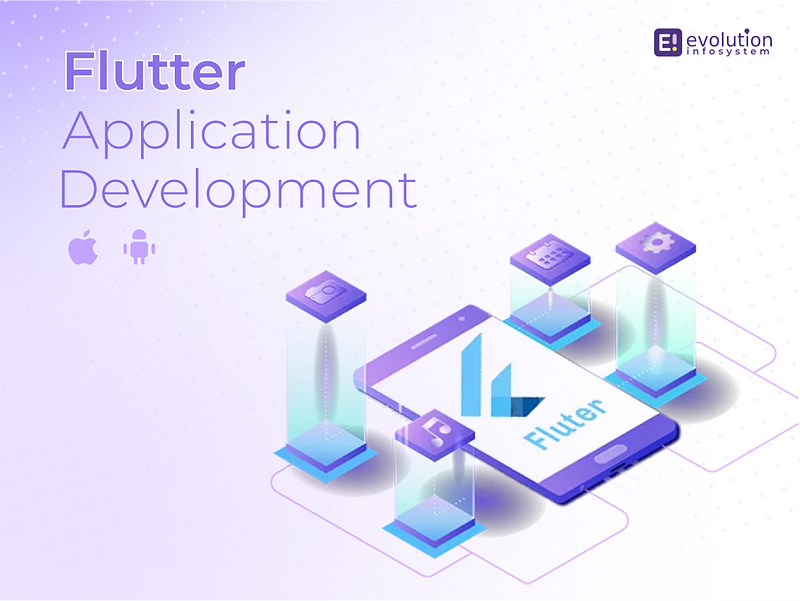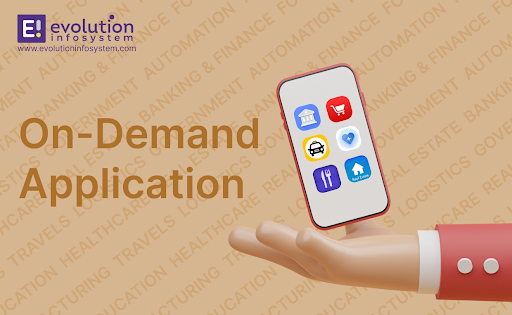Why flutter is a beneficial framework in app development?
Mobile application development is rapidly growing in the market in recent years. Gradually, three key niches, which might be the…

Mobile application development is rapidly growing in the market in recent years. Gradually, three key niches, which might be the improvement for Android, iOS, and cross-platform solutions, determine the marketplace’s similar development. Native development was sacrificed in order to quickly create packages for each dominant operating system.
Nowadays the most famous solutions are PhoneGap by adobe, Xamarin & Microsoft, react-native by Facebook. In 2017 google joined the group and introduced the flutter app development framework at the annual google I/O conference.
After the release of the stable flutter SDK in 2018, the SDK has transformed from an experimental development tool to one that’s suitable for commercial development.
What is Flutter?
Flutter is an open-source UI framework developed by Google that allows developers to build native-quality mobile, web, and desktop applications from a single codebase. Flutter is a valuable modern tool used to create stunning cross-platform applications that render native code on each device and OS. Flutter is compatible with Android, iOS, Linux, MacOs, Windows, etc.
What points make flutter unique?

One vital characteristic that makes Flutter unique is that it lets you create apps for multiple platforms using a single codebase. Writing new codes for every platform is not absolved from your responsibilities.
what are the benefits of Flutter app Development?
- Flutter is an open-source and free project which makes it available to be used and looked at by way of begin-startups for any given cause. It’s more or much less like an open collaboration, subsequently making it easily accessible and user-friendly.
- Flutter’s best part is the wide range of widgets catalog available. Not only does it make it trouble-free however additionally allows you to make a functionally awesome app. You use Dart to write down your Flutter app that’s compiled to native code. The IntelliJ plugin makes for the right integration.
- Flutter uses the Skia — integrated library for rendering. This makes it a greater platform-unbiased. A wide variety of widgets for Android and iOS are available in the SDK, notably the Material and Cupertino collections. Thanks to its personal library, Flutter packages appear the equal of exceptional variations of operating structures and get mail solutions for mobile development.
- Since widgets are a part of the app and no longer the platform, you’ll likely revel in much less or no compatibility problems on exceptional OS variations. This in turn means much less time spent on testing.
- Flutter is currently the only tool for developing packages for the Fuchsia OS from Google. For several years now, the new operating system has aroused the interest of developers and questions about its motive. There are a lot of passionate fans calling it the “Android killer,” since it blurs the lines between mobile, computer, and web development.
- It takes a lot of time to build a project in compiled languages before scripting languages. With common edits, it could take up a sizable part of the running time. The Flutter Hot Reload characteristic allows you to display the effect of your edits inside the code right now.
- There are some similarities between Java and Dart, but it is not exactly the same. It makes it honestly clean for developers to make the shift. Flutter comes with a higher widget, incredible editorial integrations, and smooth to apply features that make this kit an exquisite choice to expand apps.

What flutter can not do?
- It’s alternatively easier to discover libraries for React Native than Flutter. Also, some widgets in Flutter are precise to at least one platform. This might also make a few developers pass away from Flutter if what they need is not to be had for their target platform.
- Bugs can be fixed without a new release, allowing a greater web-like continuous development system. It’s supported by using React Native, Cordova, and Ionic. Flutter doesn’t assist this.
- You can’t use Flutter to construct apps for tvOS, watchOS, CarPlay, or Android Auto. There’s limited support for Wear OS (formerly Android Wear).
Do developers like working with Flutter?
Developers widely embrace Flutter due to its numerous advantages and exceptional features. The rapid development cycle, along with the convenient hot reload functionality, significantly enhances the development experience.
With Flutter, developers can effortlessly build cross-platform applications using a single codebase, which saves time and effort. The framework’s intuitive and expressive UI framework, complemented by a vast collection of pre-built widgets, streamlines the development process and facilitates rapid prototyping and iteration.
Furthermore, the strong and supportive Flutter developer community offers valuable resources, packages, and continuous improvements, fostering a positive and collaborative environment.
Overall, Flutter enjoys a highly favorable reputation among developers, reflecting its capabilities and benefits to the app development process.
Why Flutter? A brief wrap-up
We believe that you have now gained a deeper understanding of Flutter app development and its potential benefits for your business. Although Flutter is a relatively new framework, it has rapidly gained popularity among developers and has become a preferred choice for many.
Its accessibility, cost-effectiveness, and user-friendly interface set it apart from its closest competitors. The hot reload feature enables quick iterations and bug fixes, ensuring faster delivery of updates and improvements. Additionally, with Flutter’s ability to create cross-platform apps with a single codebase, you can reduce development costs and speed-up time-to-market.




